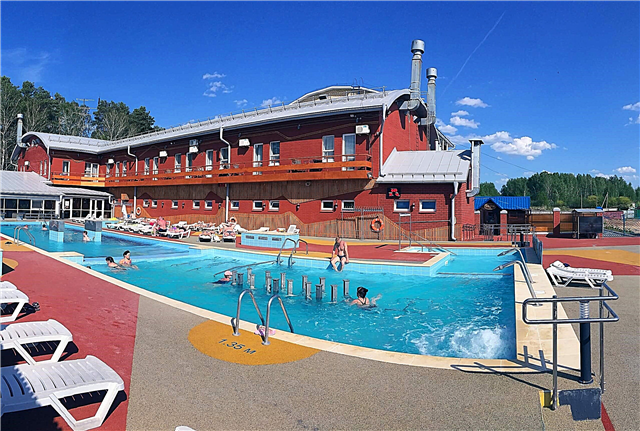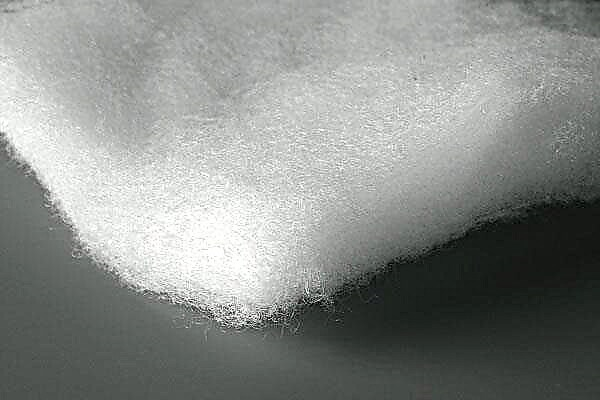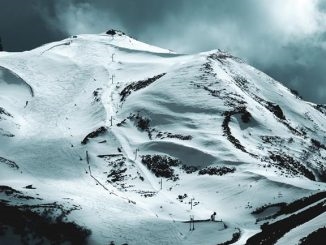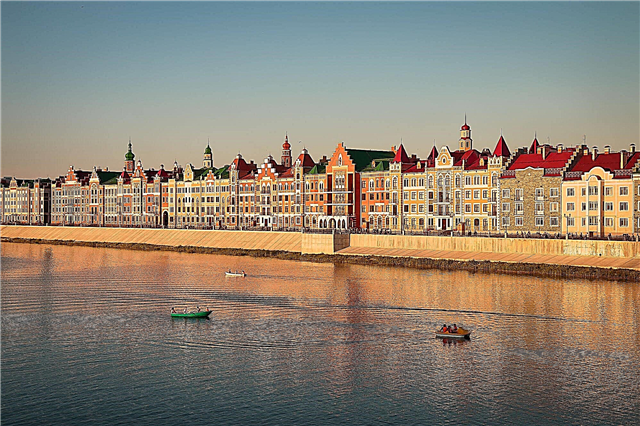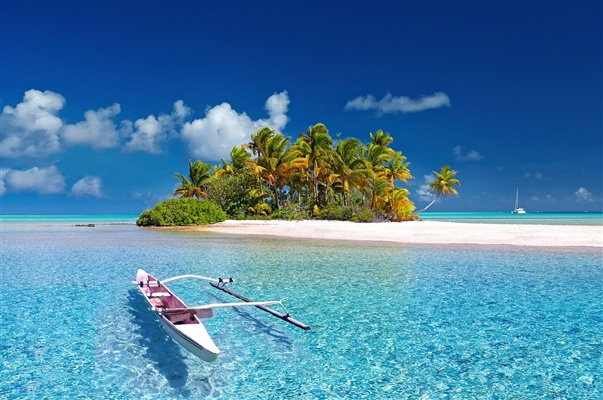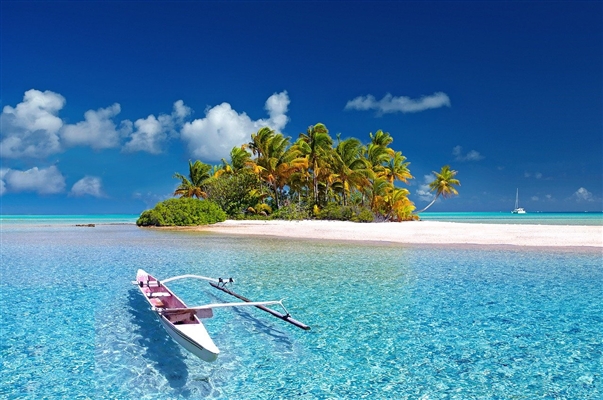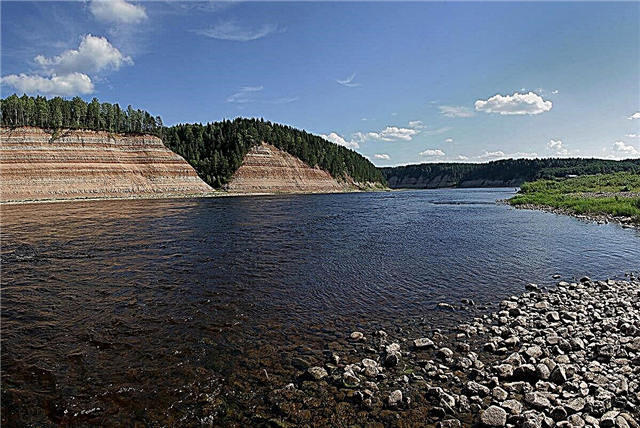The Vologda Region is one of the richest regions in Russia with rivers and lakes. Many rivers flow in it, most of which are part of the water basin of the Northern Dvina. Some of the reservoirs originate in the neighboring regions, and belong to the Tikhvin water system, which connects the Volga with the Baltic Sea. The longest rivers are the Sukhona and Yug - the right and left tributaries of the Northern Dvina. Both rivers are navigable and are the largest sources of water supply for the region.
Most of the rivers flow through the sparsely populated forest and taiga edge. The shores are distinguished by their picturesque views and almost untouched nature. Some of the territories are protected by the state as natural monuments of regional and federal significance - for example, Andoma Gora, or the Verdengsky nature reserve. Fishing is developed on the rivers of the Vologda Oblast; such rare fish species as grayling or chub are found.
The longest rivers in the Vologda region
List, photo with names and descriptions of the largest rivers in the region.
Sukhona
This is the largest river in length and depth in the Vologda Oblast. The cities of Veliky Ustyug, Totma and Sokol, as well as many small settlements, are located on Sukhona. The river is navigable, freight traffic is carried out along it. People have settled on the banks of the Sukhona since antiquity - at the confluence of the Sukhona with Vologda, archaeologists have found settlements of the 5th millennium BC. The river is a left tributary of the Northern Dvina.
The length of the river is 558 km.

Don't miss: 30 main attractions of the Vologda region.
South
The right tributary of the Northern Dvina. The river originates in the Severnye Uvaly upland, flows in the eastern part of the Vologda region, and flows into the Severnaya Dvina not far from Veliky Ustyug. The banks of the river are covered with coniferous and mixed forests, where there are many mushrooms and berries, and the height of the trees reaches 30 meters. River fishing is developed - ide, grayling, char, roach are caught.
The length of the river is 574 km, in the Vologda region - 388 km.

Waga
The sources are located in the Vologda region, on the Vago-Sukhonsky watershed. It flows into the Northern Dvina on the territory of the Arkhangelsk region, near the village of Shidrovo. Until the beginning of the 90s, timber rafting was carried out along the river. Waga is not shipping at this time. The river gave its name to many settlements, and the Vazhsky monastery.
The length of the river is 575 km, in the Vologda region - 186 km.

Mologa
The river flows in the territory of three regions - Tver, Vologda and Novgorod. The source of the Mologa is taken from the village of Klyuchevoy in the Maksatikhinsky district of the Tver region. It flows into the Vesyegonsky reach of the Rybinsk reservoir. In the Vologda Oblast, the river flows through the Ustyuzhensky District. To the village of them. Zhelyabova is navigable, there are small passenger ships.
The length of the river is 456 km, in the Vologda region 229 km.

Cubena
The source of the Kubena is located on the Konosha Upland, on the border of the Arkhangelsk and Vologda regions. The confluence is Lake Kubenskoe. In the lower reaches, the river is navigable. The area where the river flows is characterized by picturesque nature. On the shores there are natural monuments - Pustoramensky Bor and Verdengsky Nature Reserve. Fishing is well developed, and there are rare fish species.
The length of the river is 368 km, in the Vologda region - 300 km.

Kolp
The source of Kolpi is Ekshozero on the Vepsovskaya Upland in the Leningrad Region. The river flows to the southeast, then turns to the west, and twice enters the territory of the Vologda region. On it is the city of Babaevo - the center of the Babayevsky district, the village of Verkhnevolsky, and several villages and villages. Kolp flows into Sudu not far from the village of Ust-Kolp, Kaduy district. The river banks are wooded, partly taiga, the current is fast.
The length of the river is 254 km, in the Vologda Oblast - 154 km.

Kokshenga
The river originates from the village of Ilezsky pogost, Tarnogsky region, and flows in a western direction. In the Arkhangelsk Region, it flows into the Ustya River (a tributary of the Vaga). Kokshenga crosses the Northern Railway in the vicinity of the station of the same name and the village. The river bed is meandering, the banks are steep and steep. The largest tributaries of the Kokshenga are Pechenga, Upper and Lower Maiga, Ivas, Tarnoga.
The length of the river is 251 km, in the Vologda region - 128 km.

Chagodoshcha
The river originates from the Tikhvin ridge in the Leningrad region. In the upper reaches it is called Chagoda. On the territory of the Vologda region, it flows through the Chagodoshchensky, Ustyuzhensky and Babayevsky districts. It flows into the Mologa River. The river gave its name to the village of Chagoda in the Vologda region. During the flood period, Chagodosha is navigable in some areas.
The length of the river is 242 km, in the Vologda region 166 km.

Kichmenga
The river originates in the Kichmengsky bogs and flows through the Kichmengsko-Gorodetsky and Velikoustyugsky districts of the Vologda region. It flows into the Yug River near the village of Kichmengsky Gorodok. The name comes either from the Finno-Ugric "kych" - ring, or from the Mari "chekemen" - "dark". The river really flows in a ring-shaped channel, and in some places it is swampy, with dark water.
The length of the river is 208 km.

Kuloy
The river flows on the territory of two regions - Vologda and Arkhangelsk. The Kuloi flows out of Lake Songuzhskoye, flows into the Vaga near the village of Shulepovskaya in the Arkhangelsk region. The river has many tributaries, the largest of which are Kolenga, Sivchuga and Bolshaya Selmenga. The name comes from the Sami words "kull" - "fish" and "vooy" - "river". Fishing is really well developed on the river, there are rare fish species.
The length of the river is 206 km, in the Vologda region 156 km.

Ships
The vessel originates in the northwestern part of the Vologda region, at the confluence of the Nozhema and Koloshma rivers. The river is known for its picturesque banks, nicknamed "Vologda Switzerland". In the vicinity of the village of Borisovo-Sudskoye, on the bank of the Suda, there is an old estate called Khvalevskoye, as well as the spring of St. Nicholas the Wonderworker.
The length of the river is 184 km.

Sharzhenga
It is a left tributary of the Yug River, which originates not far from the village of Studenoye in the Sharzhengsky bog. The confluence with the Rybinsk reservoir. The banks are steep and steep, their height is 40-60 meters above the water level. The river was famous for its fishing, but the fish population declined due to poachers. The forests are rich in berries and mushrooms, and there are rare plant species.
The length of the river is 183 km.

Lying
The right tributary of the Sukhona, originates at the border of the Vologda, Kostroma and Yaroslavl regions. The channel is meandering, the current is very weak. It flows through the territory of the Gryazovets and Vologda regions. Downstream there is the possibility of shipping. The river has 31 tributaries, the largest of which are Komela, Senga and Losta.
The length of the river is 178 km.

Dvinitsa
The river flows on the territory of three districts of the Vologda region - Kharovsky, Mezhdurechensky and Sokolsky. The source is located at the Big Marshes, not far from Kharovsk. It flows into the Sukhona. The river gave its name to the village located at the confluence of the Dvinitsa and Sukhona. In the lower reaches, the banks are swampy, in the upper, the river flows along the southern slope of the Kharovsk ridge.
The length of the river is 174 km.

Andoma
The source of the river is on the Andoma Upland. In the upper reaches of the Andoma, it passes through many lakes, the largest of which is Ain Lake, and flows into the Samina. Not far from the mouth of the Andoma, there is a federal natural monument - the Andoma geological section, or Andoma mountain. The surroundings of the river are mentioned in the works of the poet Nikolai Klyuev, whose childhood was spent in this area.
The length of the river is 156 km.

Vologda
The Vologda River is the right tributary of the Sukhona. The source is in the north-west of the Vologda region. The largest tributaries of the river are Sindosh, Toshnya, Maslyanaya. From the confluence of the Toshnya River, Vologda is navigable.The city of the same name and the village of Molochnoe are located on it. After crossing with the regional center, the current becomes almost imperceptible, the river and its banks become swampy.
The length of the river is 155 km.

Kema
Kema flows out of Lake Kemskoye on the Andomskaya Upland, and flows into Lake Beloe near the villages of Pokrovskoye and Nikolskoye, Vashkinsky District. The current is fast; there are springs and springs along the entire length of the river. In the lower reaches of the river, an archaeological monument was discovered - an ancient settlement, which dates back to the X-XI centuries. The banks of the Kema are picturesque, the river is full of fish of different types - roach, grayling, bream, ide, chub.
The length of the river is 150 km.

Knee
The river flows on the territory of the Tarnogsky and Verkhovazhsky districts of the Vologda region, and the Velsky district of the Arkhangelsk region. The source is located in a marshy area in the north of the Tarnogsky region. The villages of the Kolenga rural settlement are located along the stream, but most of the river passes through the forest area. The largest tributary is Bolshaya Elga.
The length of the river is 150 km, in the Vologda region - 121 km.

Andoga
The source of the river is the Andean Lake in the Belozersky District of the Vologda Oblast. Further, the river flows in a southerly direction, and flows into the Souda from its left bank, 10 km from the mouth. On the bank of the river, at the confluence of the Irap stream with Andoga, there is the Holy Trinity Filippo-Irapsky Monastery. At the confluence of the river Shulma and Andoga, in the village of Nikolskoye, there is a memorial cross on the site of the destroyed Church of the Exaltation of the Cross. There is also a spring, which is considered miraculous.
The length of the river is 142 km.

Vozhega
The river originates in the north of the Vologda Oblast, on the Verkhnevazhskaya Upland. The general direction of the current is west. The village of the same name is located on the river. Vozhega flows into Lake Vozhe, which is rich in fish. The lower reaches of the river are also favorable for fishing, there are many species of fish - pike, ide, roach, chub and others. In the center of Lake Vozhe there is an island with the ruins of an ancient 17th century monastery.
The length of the river is 140 km.

Upper Yorga
The river flows on the territory of the Velikoustyug district. The source is located on the border with the Arkhangelsk region, near the village of Lomovatka. Most of the river's length passes through wooded uninhabited or sparsely populated areas. The Upper Yorga flows into the Sukhona not far from the deserted village of Tishino. The shores are rich in conifers and rare plant species. The largest tributaries of the Upper Yorgi are Arbezh, Nartitsa, Kandarsa.
The length of the river is 140 km.

Sheksna
The source is in the White Lake, flows into the Rybinsk reservoir. Until the beginning of the 20th century, its length exceeded the modern one by more than twice. But due to the construction of the Sheksninsky and Rybinsky reservoirs, as well as the hydroelectric power station, part of the current was flooded. The river has long been famous for its fishing. "Sheksninskaya sterlet gold" is mentioned in the verses of G. Derzhavin (XIX century). Now fish stocks have decreased significantly, but amateur fishing continues to be popular in Sheksna.
The length of the river is 139 km.

Lower Yorga
The river originates in the Arkhangelsk region. On the territory of the Vologda region, it flows through the Velikoustyug district. The confluence with the Sukhona along its left bank. Like Verkhnyaya Yorga, it is popular among fans of fishing and river travel. The shores are sparsely populated, mostly wooded, there are nature reserves protected by the state.
The total length of the river is 135 km.

Uftyuga
The source of the river is located near the marshes near the Sulonda railway station in the Ustyansky district. The current passes through a sparsely populated forest area. It flows into the Sukhona River from the left side. Previously, the river was actively used as a timber floating river. At the bottom, you can still find the remains of logs. The largest tributaries of the Uftyuga are Porsha, Sulonga, Tomashka, Bolshoy Berezovets stream.
The total length of the river is 134 km.

Syamzhena
The source of the Syamzhena is a swamp on the northern slope of the Kharovsk ridge. It flows on the territory of two districts of the Vologda region - Sokolsky and Syamzhensky. The center of the latter is the village of Syamzha, named after the river. The Syamzhena flows into the Kubena River along its left bank, 137 km from the mouth. Tributaries - Shoksha, Big Pungul, Shichenga, and others. The river is rich in fish, there are many mixed and coniferous forests on the banks.
The length of the river is 117 km.



